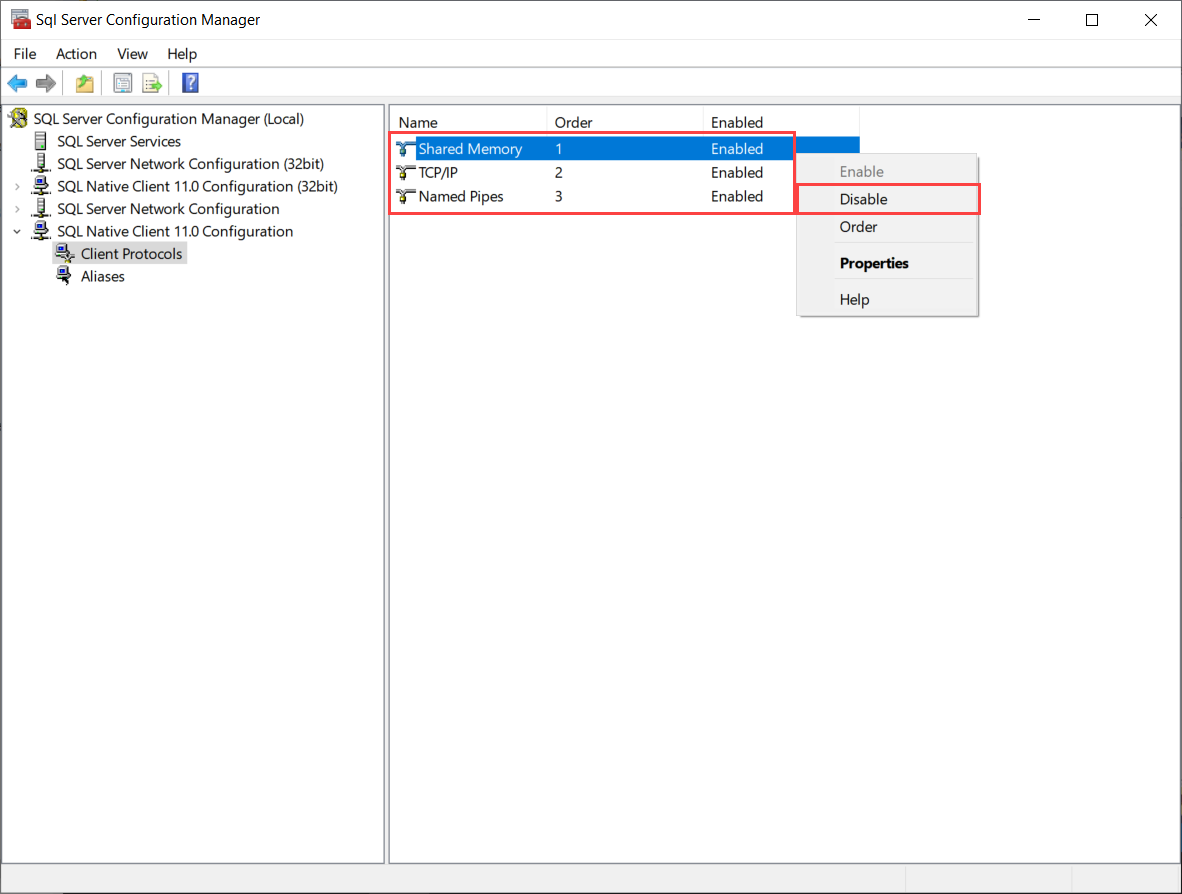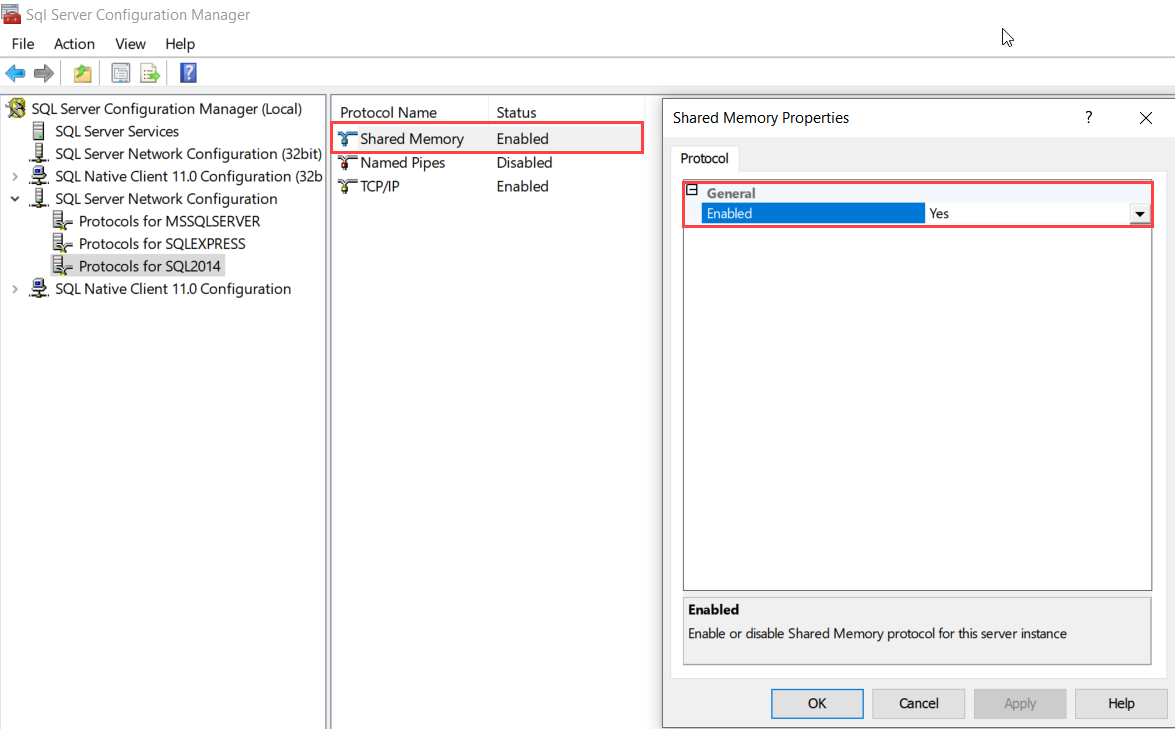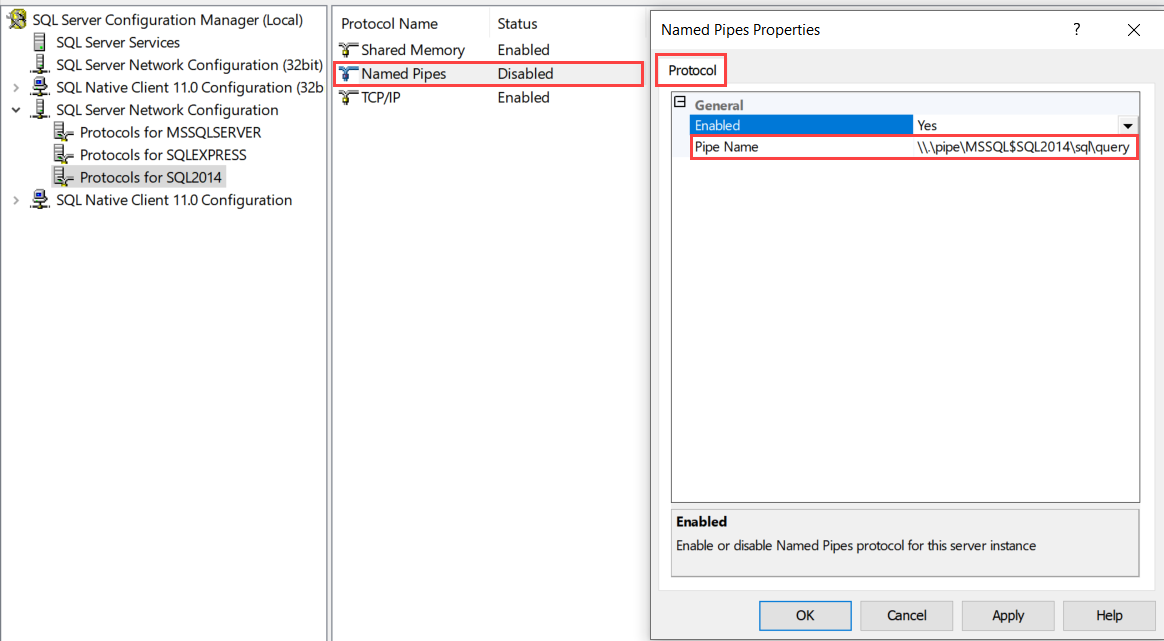SQL Server configuration manager is a tool provided by Microsoft SQL Server. When we install SQL Server, it is installed automatically. It is used for the following purposes.
- Manage SQL Server services
- To manage SQL Server network configuration (32 bit and 64 bit)
- To manage the SQL Server native client configuration
- Create alias and manage client protocols
The SQL Server configuration manager is a Microsoft console management snap-in and is in the start menu. You can find it once the installation of the SQL Server is completed. To open the configuration manager, Microsoft management console uses the “SQLServerManager<version>.msc” file. For example, if you have installed SQL Server 2019 on the server, then you can open it by running “SQLServerManager15.msc” command.
How to open the SQL Server Configuration Manager in SQL Server 2017
To open configuration manager in SQL Server 2017, press the Windows and R key together. In Run, type “SQLServerManager14.msc” command. The SQL Server configuration manager will open. Following is the list of commands that can be used to open the SQL Server configuration manager using “Run” or command prompt for different versions of SQL Server.
| SQL Server version | Command |
| SQL Server 2019 | SQLServerManager15.msc |
| SQL Server 2017 | SQLServerManager14.msc |
| SQL Server 2016 | SQLServerManager13.msc |
| SQL Server 2014 | SQLServerManager12.msc |
| SQL Server 2012 | SQLServerManager11.msc |
Manage SQL Server services
We can start, stop, and restart the SQL Server services using the configuration manager. In the Left pan, select the “SQL Server services.” You can view the list of SQL Server services. In my workstation, I have installed multiple instances of SQL Server. Hence, I can manage them from one place. See the following image:
Now, we can start, stop, and restart the SQL Server services. To do that, right-click on any SQL Server service and in the context menu, you can see the options to start, stop, and restart the services. See the following image:
You can also change the startup parameters, enable AlwaysOn availability features, and other advanced options from the properties. To open it, right-click on SQL Server service and click on “Properties.” See the following image:
To change SQL Server startup parameters, click on the “Startup Parameter” tab. See the following image:
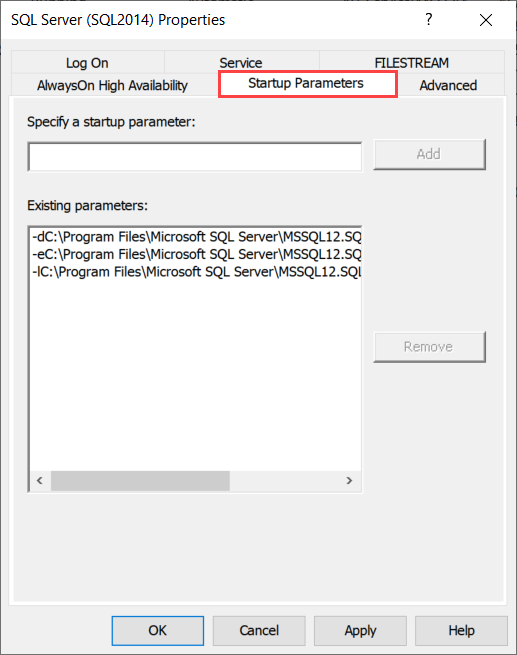
To change the SQL Server service account, click on the “Log On” tab. Moreover, you can also start/stop/restart the SQL Server service and view the status of the service. See the following image:
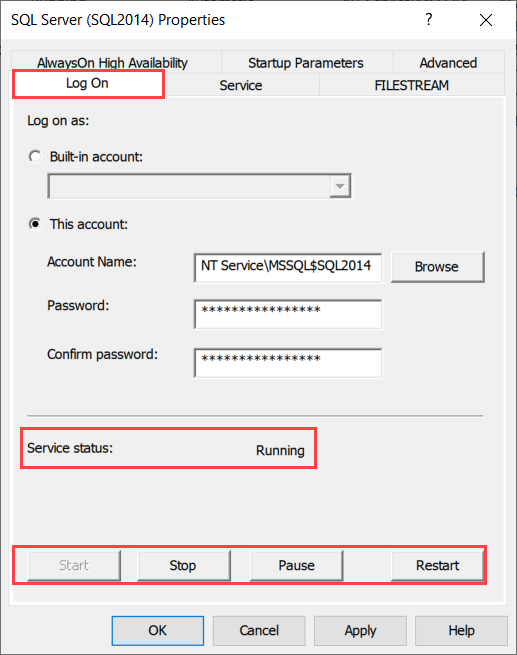
To enable the AlwaysOn availability group, click on the “AlwaysOn High Availability” tab. See the following image:
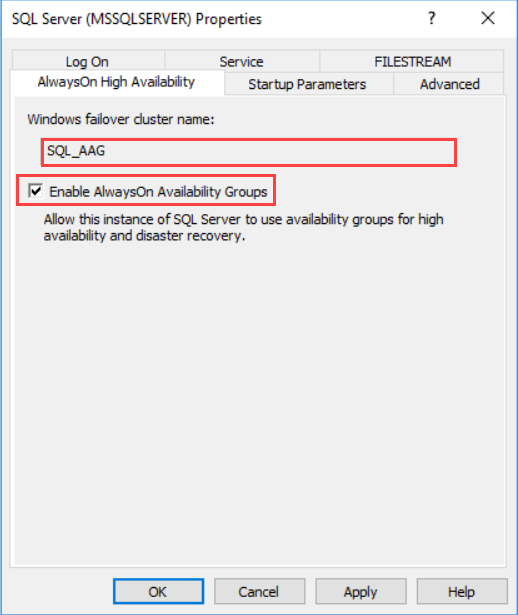
Manage SQL Server native client configuration
SQL Server native client is a network library that the client uses to connect to the SQL Server. Using the SQL Server configuration manager, we can perform the following tasks:
- Change Client protocols
- Create and configure an alias
To change the client protocols, click on “Client Protocols” under the “SQL Native client 11.0 configuration.” See the following image:
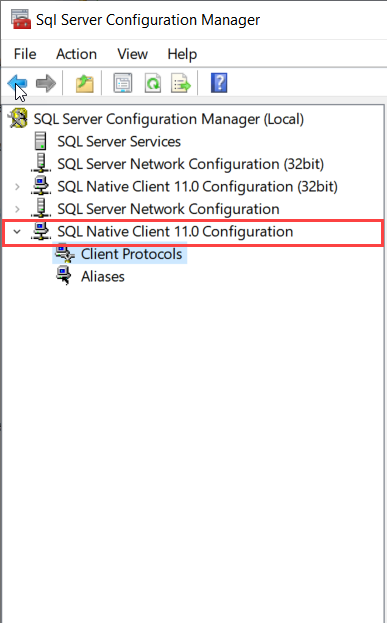
Clients can connect to the SQL Server using any of the following protocols.
- Shared Memory
- TCP/IP
- Named Pipes
In the right pane, you can see the list of all the above client protocols. You can enable/disable any of the protocols. To do that, right-click on any of the protocols and select Enable/Disable. See the following image:
We can also define an alias. Alias is an alternate name that can be used to connect to SQL Server. To create a new alias, right-click on Aliases and select “New Alias.” See the following image:
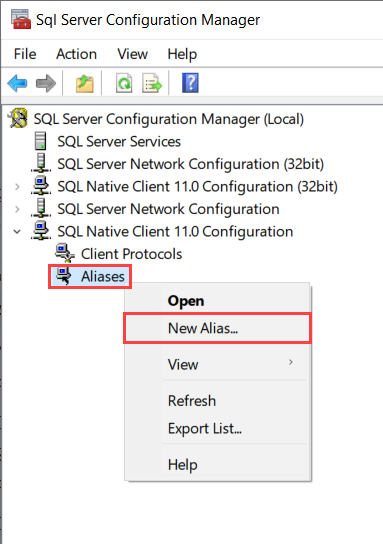
In Alias – New dialog box, provide Alias Name, Port number, a protocol used to connect SQL Server and hostname of the SQL Server. See the following image:
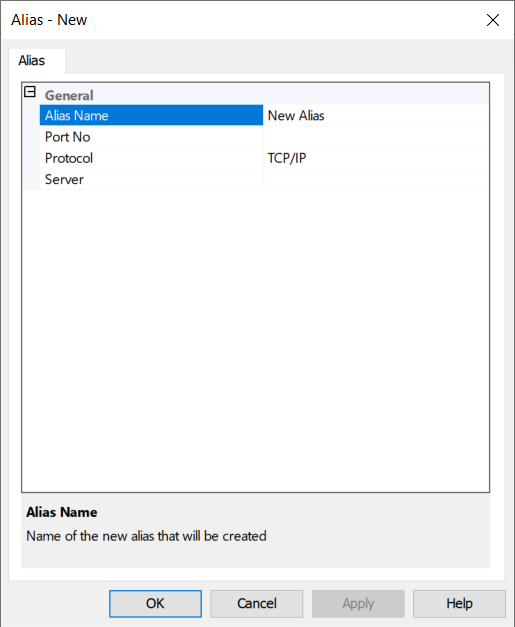
You can read Overview of SQL Server Aliases article to learn more about SQL Server aliases.
Manage SQL Server network configuration
From manage SQL Server network configuration node, you can enable or disable the network protocols supported by SQL Server.
- Shared Memory
- TCP/IP
- Named Pipe
The Shared Memory Protocol
The Shared memory protocol is used by the clients to connect the SQL Server instance on the same server. It is the simplest protocol and does not have any configuration options. You can only disable or enable the protocols that can be done from the properties window. To do that, See the following image:
The TCP/IP Protocol
Using TCP/IP protocols, computers can connect to the SQL Server instance. To configure the TCP/IP settings, right-click on the TCP/IP protocol and choose properties. See the following image:
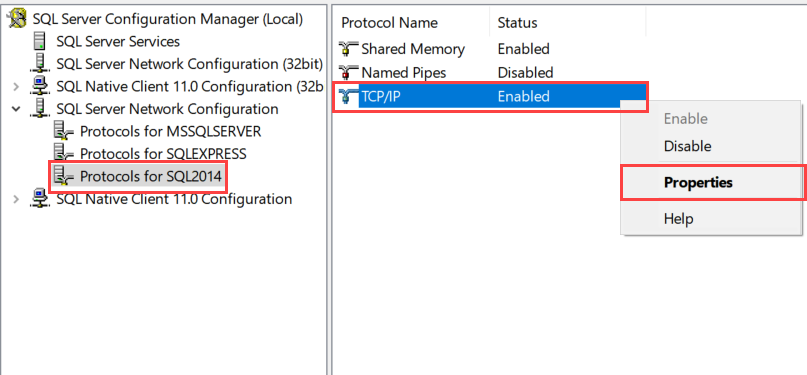
From the “protocol” tab in the properties dialog box, you can disable or enable the protocol, define the time for how long the connection will remain active and define that whether it can listen to all IP Addresses. See the following image:
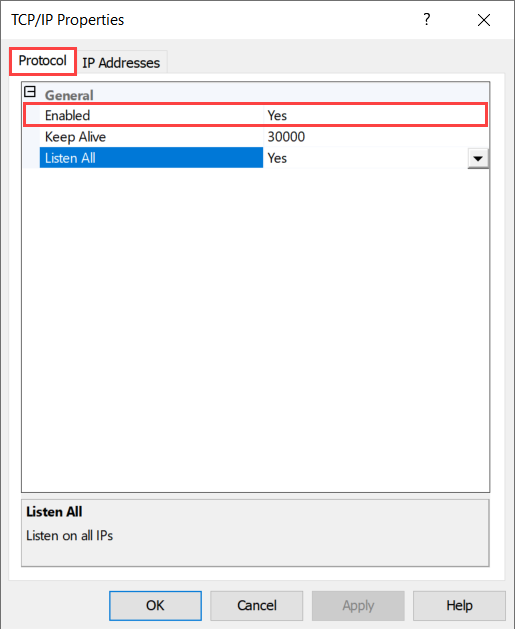
In the IP Addresses tab, you can specify the IP Address and the port number on which the SQL Server service will accept the incoming connections. See the following image:
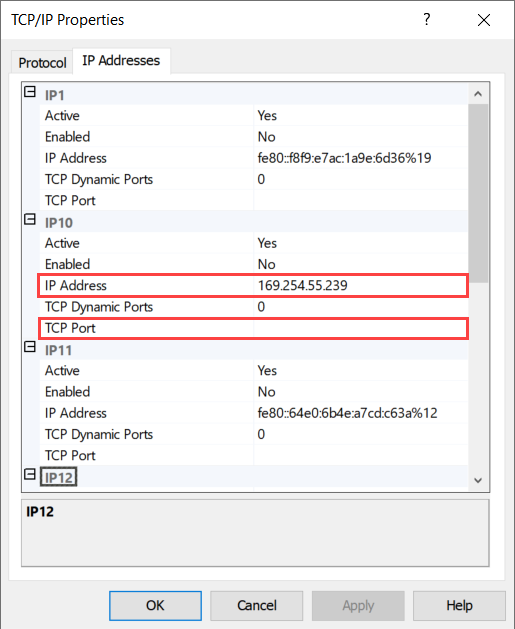
The Named Pipe Protocol
The named pipe protocol is configured for local are network and it is used for inter-process communication. To configure a valid named pipe connection string, right-click on “Named Pipe” and choose properties. Under the protocol tab of the “Named Pipe properties” dialog box, you can specify the valid named pipe connection string in the Pipe Name text box. See the following image:
Summary
In this article, I have explained the SQL Server Configuration Manager and how to use it to configure SQL Server services and its configuration parameters.
- Different ways to identify and change compatibility levels in SQL Server - July 22, 2024
- Copy SQL Databases between Windows 10 and CentOS using SQL Server data tools - October 19, 2022
- Changing the location of FILESTREAM data files in SQL Database - October 14, 2022





